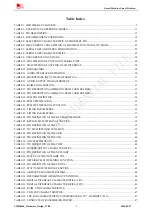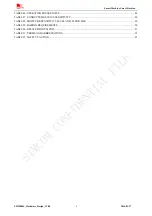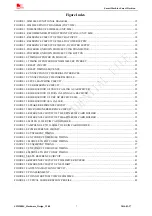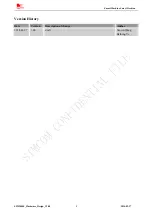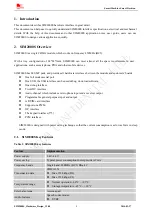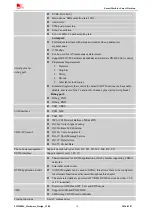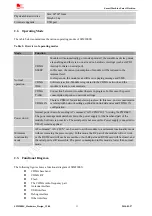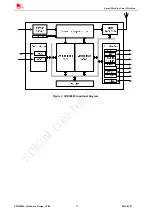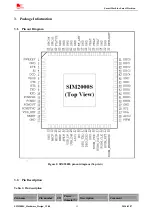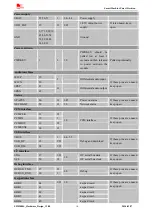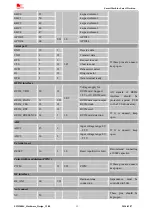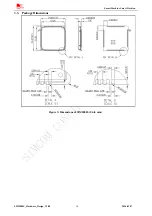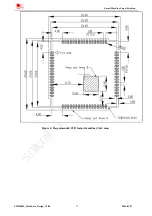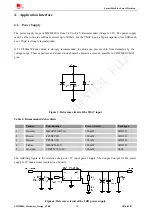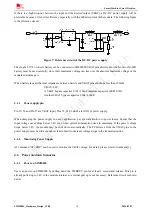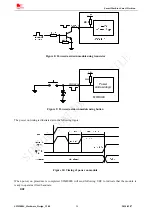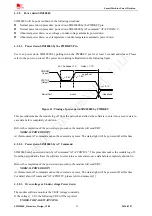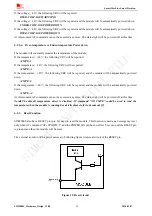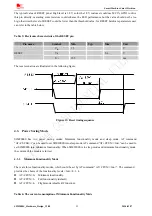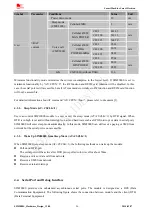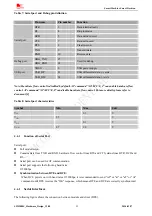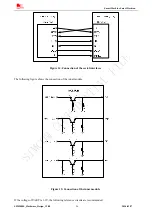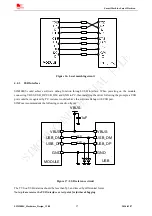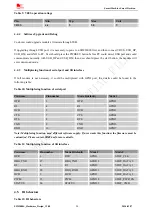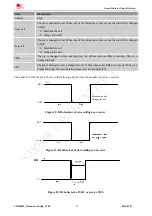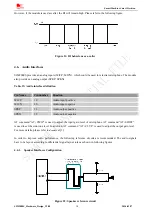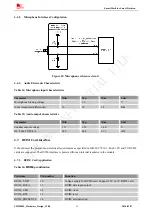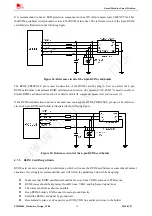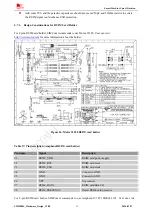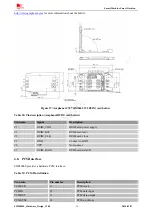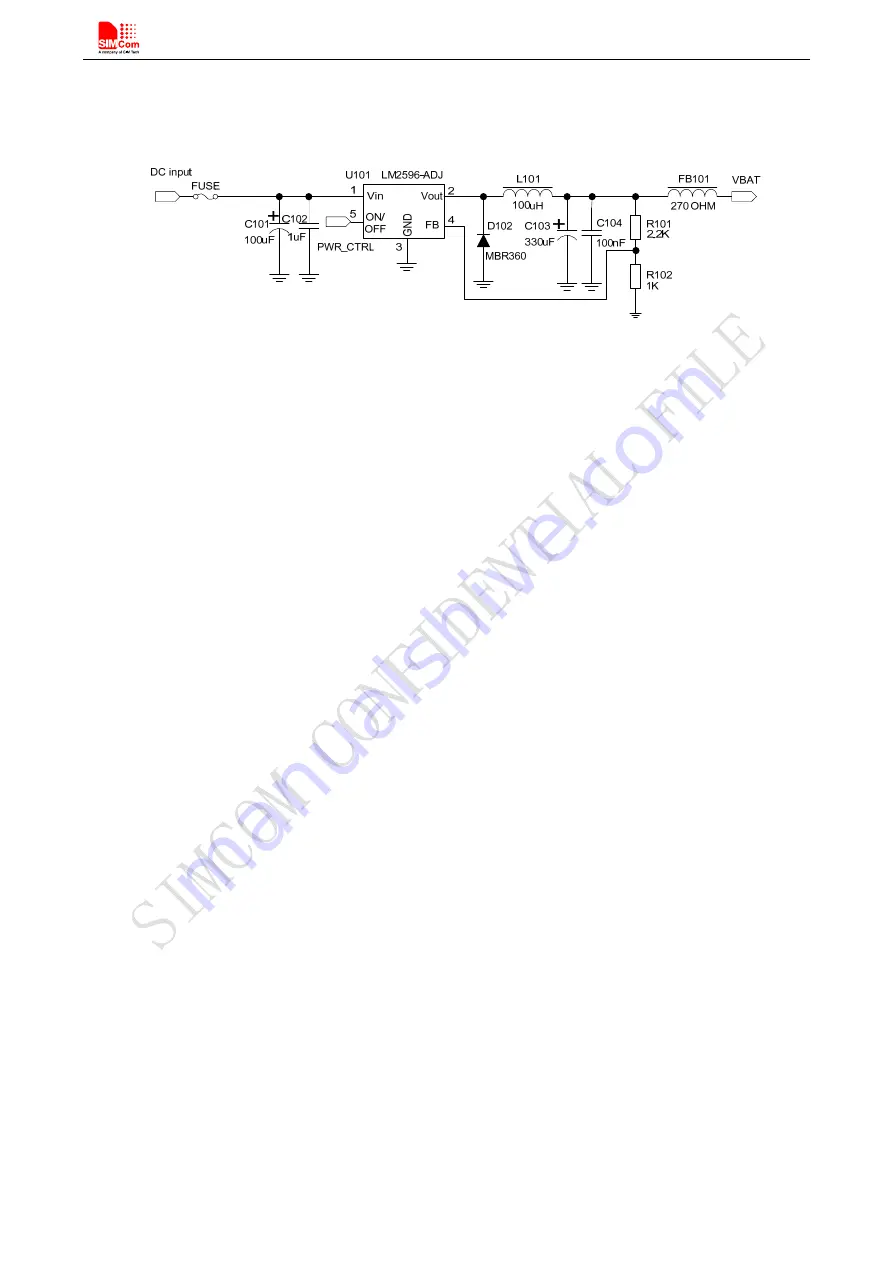
Smart Machine Smart Decision
If there is a high drop-out between the input and the desired output (VBAT), a DC-DC power supply will be
preferable because of its better efficiency especially with the 600mA current of the module. The following figure
is the reference circuit.
Figure 7: Reference circuit of the DC-DC power supply
The single 3.7V Li-ion cell battery can be connected to SIM2000S VBAT pins directly. But the Ni-Cd or Ni-MH
battery must be used carefully, since their maximum voltage can rise over the absolute maximum voltage of the
module and damage it.
When battery is used, the total impedance between battery and VBAT pins should be less than 150m
Ω
.
VBAT=4.0V,
A VBAT bypass capacitor C101=100µF tantalum capacitor (ESR=0.7
Ω
),
Another VBAT bypass capacitor C104=100nF.
4.1.1.
Power supply pin
Pin 55, 56 and Pin 57 are VBAT input, Pins 53, 54,63,64,65 are GND of power supply.
When designing the power supply in user’s application, pay special attention to power losses. Ensure that the
input voltage never drops below 3.4V even when current consumption rises to maximum. If the power voltage
drops below 3.4V, the module may be shut down automatically. The PCB traces from the VBAT pins to the
power supply must be wide enough (at least 60mil) to decrease voltage drops in the transmission line.
4.1.2.
Monitoring Power Supply
AT command “AT+CBC” can be used to monitor the VBAT voltage. For detail, please refer to document [1].
4.2.
Power on/down Scenarios
4.2.1.
Power on SIM2000S
User can power on SIM2000S by pulling down the PWRKEY pin for at least 1 second and release. This pin is
already pulled up to 1.8V in the module internal, so external pull up is not necessary. Reference circuit is shown
below.
SIM2000S_Hardware_Design_V1.00
19
2014-02-27

